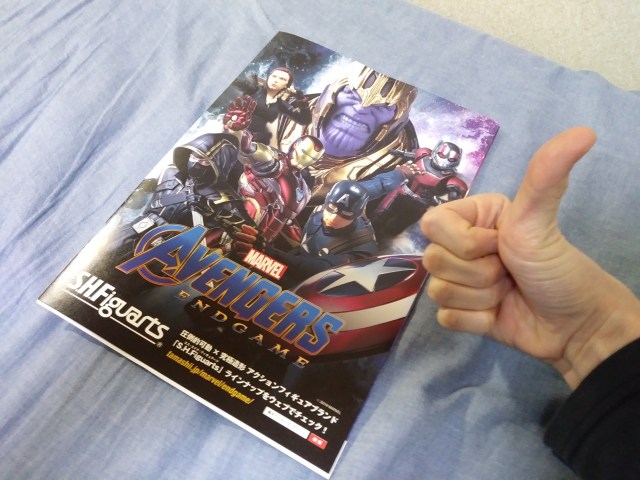
”Moe has ruined anime.”
Keiko Moritsugu (@W_Fei_hung on Twitter) doesn’t have the longest anime industry resume, but she can boast of involvement in two of Japan’s biggest animation franchises. While still a student, she worked as a CG artist for the perennially popular Doraemon, and after graduation she joined Game Freak, where she became a conceptual character artist for the animated Pokémon franchise.
But just because she worked on a pair of high-profile anime doesn’t mean that Moritsugu is happy with where the industry is as a whole. As a matter of fact, she’s disappointed in the current state of Japanese animation, especially compared to its across-the-Pacific counterparts Marvel and Disney.
“The quality of Disney and Marvel movies get better and better every year, and the reason why is because they work issues that society is grappling with into their scripts. Japanese animation has become unable to do that. The methodology for making anime is ‘As long as we put some sexy stuff in, we can trick otaku into buying it, right?’”
“These days, if you made a movie like Zootopia in Japan, I think people would get all worked up about it online, and say things like ‘Kill the feminists!’ and ‘Wait, this movie was only made to please minorities.’ But there’s nothing wrong with that happening. That shows that a movie has social relevance.”
In subsequent tweets, Moritsugu had more to say about male anime fans being “tricked” by the content they watched, and how she feels that creates a problem for women as well.
“I think men probably get deceived watching anime that’s just about girls being giggly and screechy, but when women look at men who desire too much comforting from women, it’s psychologically exhausting.”
It’s not just explicit sexual content that upsets Moritsugu either. In yet another tweet, she expressed her feelings on “moe,” a kind of protective affection felt towards a character, after another Twitter user mentioned their hatred of 2008 anime TV series Sekirei.
“I’m not just angry at bluntly sexualized anime like this. I’m also angry at anime that include this attitude in a diluted form. I really think that moe has ruined anime.”
However, Despite Moritsugu’s clear belief that anime needs to take a page out of the playbooks used by Disney and Marvel, many commenters had dissenting opinions, leaving remarks such as:
“Is ‘works issues that society is grappling with into the scripts’ your only criteria for what constitutes good anime? If so, I think you have a largely mistaken perception of what the artform of animation is.”
“That ‘higher quality’ for Disney and Marvel is nothing more than a result of having more money to spend than anime studios do.”
“Isn’t the reason Disney doesn’t put sexual content in their cartoons just because in the west animation is thought of as something for children? Live-action Hollywood movies have plenty of sex scenes and kissing scenes.”
“Sure, a lot of anime are filled with sexual content, but there are a lot that aren’t too. There is so much anime being produced that you can’t really say ‘All of it is like this.’”
“Ultraman, Kamen Rider, Super Sentai, PreCure, and Detective Conan are all getting higher-quality year after year.”
A lot of the discourse seems to stem from Moritsugu’s apparent framing of high quality and sexual content as an either/or proposition, with multiple commenters pointing out that since Marvel and Disney are aiming their products at a worldwide audience, those broader demographics are naturally going to shift the content of their films away from the sexual fetishes that so often crop up in otaku and fujoshi-oriented anime. The target market for a new Disney movie is essentially “anyone in the world who’s a kid or kid at heart,” and for Marvel movies it’s “anyone in the world who likes action movies.” Anime, though, especially the risque or moe projects that Moritsugu is taking aim at, are much more of niche product, with their creators knowing full well that they won’t appeal to everybody, and the goal instead being to appeal very strongly to a certain subset of somebodies.
That said, Moritsugu, who describes herself as an “ingenious artist” in her Twitter profile, isn’t convinced that sort of more concentrated focus is good for the long-term health of the anime industry.
“Since Evangelion, anime has become something where if you add in some erotic content so people will buy it, then it’s all good. That made it easier to trick male otaku who can’t get a girlfriend, and it became harder and harder to find anime that are artistic creations, and now anime has fallen into a regressive loop.”
Of course, there’s no shortage of anime fans who became fans because they preferred the Japanese animation industry’s style of telling stories of magical wonder and spectacular action to the way Disney and American comic books handle such elements. It’s also not like Japanese anime fans are only watching anime because they don’t have access to Disney or Marvel films, since all of the companies’ movies see nationwide theatrical releases in Japan. Quality is, after all, a subjective thing, and just as Moritsugu sees it in a willingness to weave contemporary social commentary into a script, other people may find it in any number of other things, including titillation, and to them late-night boob-and-butt anime might embody the highest level of quality they can imagine.
Source: Twitter/@W_Fei_hung via Jin
Top image ©SoraNews24
● Want to hear about SoraNews24’s latest articles as soon as they’re published? Follow us on Facebook and Twitter!
Feel free to follow Casey on Twitter regardless of whether you preferred Avengers: Endgame or Sekirei.